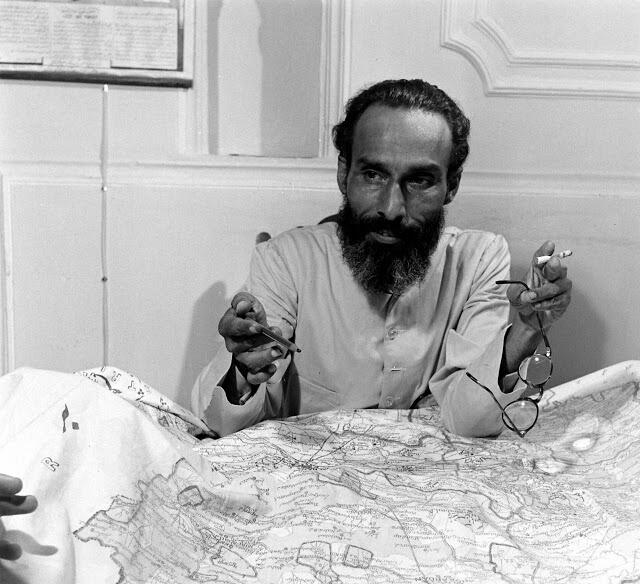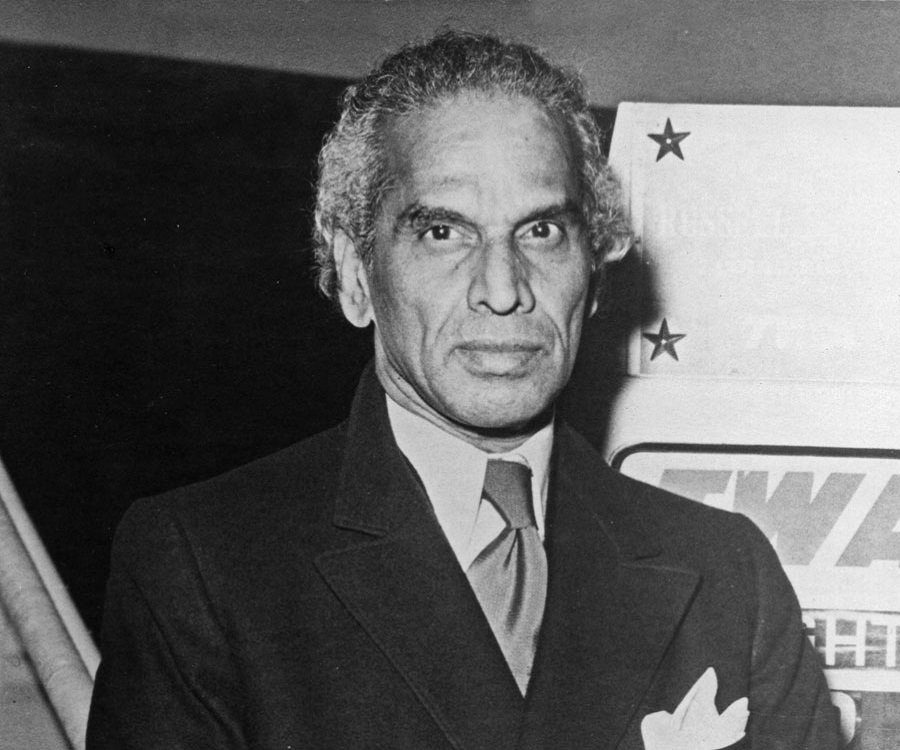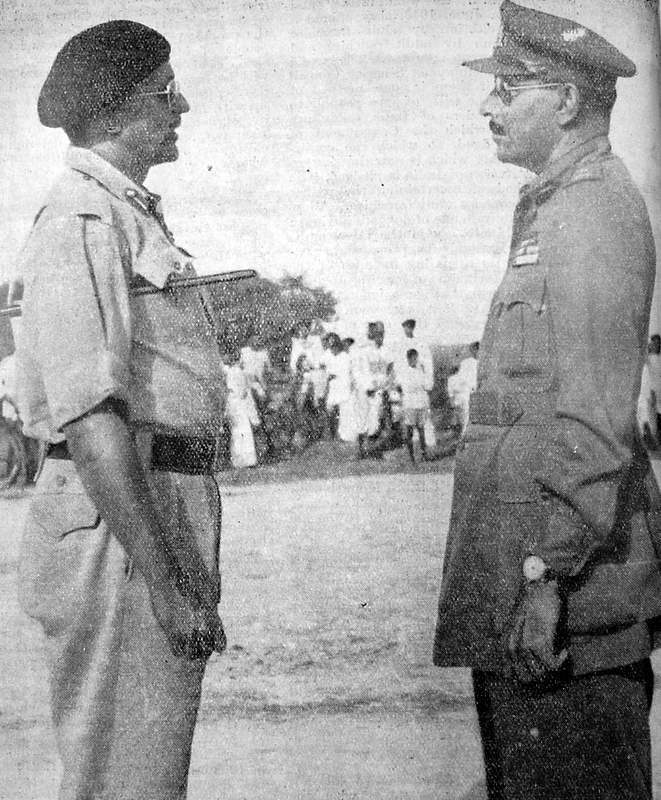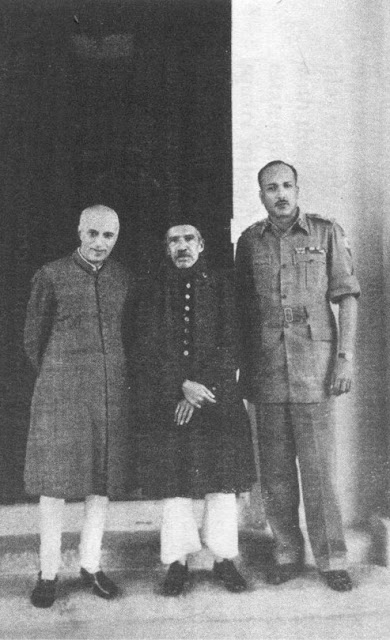70 Years Ago, Hyderabad Acceded to India: What Unfolded in Those Crucial 109 Hrs
Diplomatic smarts, decisive military action and a battle of cables — here's the story behind the September 17, 1948 surrender of Hyderabad's Nizam.

Today marks the 70th anniversary of the day the erstwhile Hyderabad State merged with the Indian Union. At noon on September 17, 1948, the 2,12,000 square kilometre-large kingdom of Hyderabad ceased to exist as a princely state after it surrendered to Indian forces fighting under the command of Major General JN Chaudhari. The battle lasted all of 109 hours, but it could have gone on for longer had New Delhi not undertaken extensive diplomatic efforts to stymie the flow of arms into the princely state ruled by Mir Osman Ali Khan, the seventh Nizam of Asaf Jahi dynasty.
So, how did it all happen?
Following Independence, the Indian government, under the aegis of Prime Minister Jawaharlal Nehru, began the process of merging all princely states into the Union and these efforts were led by Home Minister Sardar Patel. While India did manage to sign the Instrument of Accession with many princely states at the time of Independence, the Nizam of Hyderabad did harbour hopes of Independence or at least a merger with Pakistan.
Delaying the inevitable, the Nizam set up his three-member team of trusted officials to negotiate a Standstill Agreement signed on November 29, 1947, under which both sides would have one year’s time to come up with an amicable solution. Defence, foreign affairs and communications would come under the control of the Indian Union for the year, while the Nizam would maintain authority over domestic affairs, said the agreement between Governor General Lord Mountbatten and Nizam.
However, once Lord Mountbatten vacated office in June 1948, the ground beneath the Nizam’s feet began to shift rapidly. Of course, the Nizam’s case on the ground wasn’t helped by a private militia, called the Razakars, organised by a wily Qasim Rizvi.
Rizvi was a lawyer from Latur who had taken over control of the Majlis-e-Ittehadul Muslimeen (MIM) party and wielded considerable influence within the Nizam’s court even though he held no official position. He led the separatist charge against India.
Any dissent emerging against the Nizam, particularly from those who fought for India’s Independence, was brutally crushed by the Razakar force. Once C Rajagopalachari took over from Lord Mountbatten as Governor General, he sent a letter to the Nizam ordering him to stop the Razakar movement in its tracks and allow Indian forces stationed in Hyderabad province to handle law and order. The Indian Union took matters one step further when it published a white paper in August 1948 highlighting why the Indian Union would have to take punitive steps against Hyderabad state, listing out more than 300 instances of alleged crimes committed by the Razakars.
With the Nizam remaining steadfast in his hopes of Independence, the Indian government seriously began contemplating military action and strategized that any resistance to them would fall apart within weeks.
In a two-pronged attack, the Indian forces would converge into Hyderabad from both the Sholapur-Hyderabad road and Bezwada (Vijayawada)-Hyderabad road. Code-named Operation Polo, the Indian forces began their march towards the Deccan.
However, months before any of this would happen, there were furious diplomatic efforts from the Indian side seeking to prevent the flow of arms towards Hyderabad as described in the now declassified diplomatic cables between the India War Office State, the Commonwealth Relations Office (CRO) and the British Foreign Office, reports The Hindu.
The Indian diplomatic corps got the British government into helping them persuade the French to not sell arms to Pakistan, which they believe would have been funnelled through to Hyderabad.
Among the first cables sent to the Commonwealth Relations Office by the senior British Foreign Office official RHS Allen read:
“French Embassy informed Foreign Office on 1st November that Pakistan Trade Commissioner in London recently represented to French Authorities in Paris that his government urgently desired 600,000 rifles, the same number of revolvers and 300,000 light and heavy machine guns from former German weapons in France. It added that, if France could not supply, his govt had other offers from Sweden, Belgium and the Netherlands.”
When the Indians got a whiff of such attempts, VK Krishna Menon, who was then Indian High Commissioner in London and secretary of the States Department, began escalating his efforts.
“As regards Hyderabad, it was decided that we should tell Mr Krishna Menon, who has been bothering us (FO?) on the subject, that it is not our intention, as things stand at present, to supply arms on any abnormal scale to Hyderabad, but that Hyderabad is entitled to limited quantities of arms for the legitimate purposes of their state forces and police,” read another cable sent by the British Foreign Office to the CRO in November 1947.

The Indian government wasn’t having any of it, and as multiple diplomatic cables from that month indicate, India’s diplomatic efforts at preventing Pakistan from funnelling arms into Hyderabad through official lines were very successful.
Even the Americans, whom the Pakistani government had approached for $2 billion loan, of which $200 million was for military supplies, had given them the “cold shoulder.”
By December 1947, India plugged all official lines for Hyderabad to obtain arms. Following this, the Nizam reached out to legendary Australian-born aviator Sidney Cotton, who had successfully served the Allied Forces in World War I and conducted critical photographic reconnaissance missions during World War II.
Following the Great Wars, however, Sidney did not particularly enjoy civilian life and decided to put his skills up for hire.
In the early months of 1948, he flew into Hyderabad to meet with the Nizam and present him with a list of arms and ammunition he could buy. Charging £20 million in cash for running arms and ammunition into Hyderabad, Sidney hired a 24-member team from the UK.
The first shipment of weapons landed in Warangal on July 10, 1948, from Karachi. Over the next two months, Hyderabad received a considerable cache of arms and ammunition, although, without the necessary time to train the Nizam’s men under his Commander-in-Chief Major General Syed Ahmed El-Edroos, these weapons wouldn’t be of any real use.
Also Read: The Making of A Nation: How Sardar Patel Integrated 562 Princely States
Cotton flew his last plane out of Hyderabad’s Hakimpet airstrip on September 3 with £4 million. On his last sojourn out of Hyderabad, he was expected to help Qasim Rizvi escape, but the plans fell apart rather hilariously with Sidney’s aircraft picking up speed on the runway thinking Rizvi was on board when he wasn’t.
Rizvi was soon placed under house arrest, tried for sedition and sent to prison. He was only released in 1957, after which he emigrated to Pakistan.
Meanwhile, on September 13, the Indian forces began what is euphemistically called ‘police action’ coming in from Suryapet in the east and Sholapur in the west. It took them merely four days to arrive at the outskirts of Hyderabad. Although the battle lasted just four days, anywhere between a staggering 27,000 and 40,000 people were killed. It was a battle rife with extreme bloodshed.

On the afternoon of September 17, Osman Ali Khan sent a message of India’s Agent-General in Hyderabad KM Munshi, seeking a meeting at his palace. Before the meeting took place, Munshi did manage to get Laiq Ali, the Prime Minister of Hyderabad, to resign from office. During the meeting with the Nizam, Munshi directed him to conduct a radio broadcast welcoming Indian forces, besides seeking the withdrawal of his complaint against the Indian Union in the United Nations.
For the first time in his life, reports senior journalist TS Sudhir, the Nizam walked into a radio station and made the announcement.
The Indian diplomatic corps remained relentless in their pursuit of maintaining the perception that they weren’t the aggressors, despite what the Pakistanis were peddling to the international community. India’s representative in the United States RK Nehru said on a radio broadcast on September 17, 1948:

“The British in similar circumstances would have marched in on the first outbreak of violence to restore order, put down the Razakars and bring the Nizam to his senses,” he said.
(Edited by Gayatri Mishra)
Like this story? Or have something to share? Write to us: [email protected], or connect with us on Facebook and Twitter.
This story made me
- 97
- 121
- 89
- 167
Tell Us More
We bring stories straight from the heart of India, to inspire millions and create a wave of impact. Our positive movement is growing bigger everyday, and we would love for you to join it.
Please contribute whatever you can, every little penny helps our team in bringing you more stories that support dreams and spread hope.



















